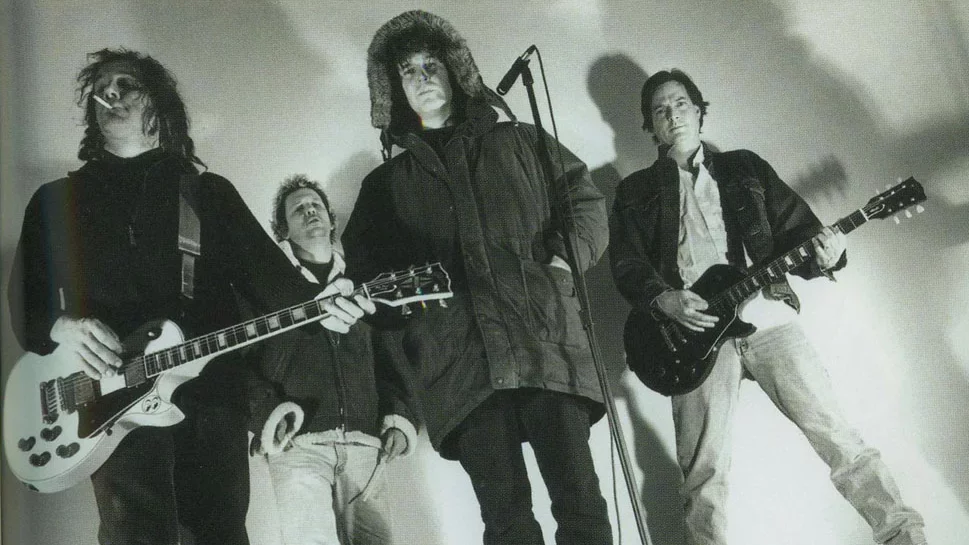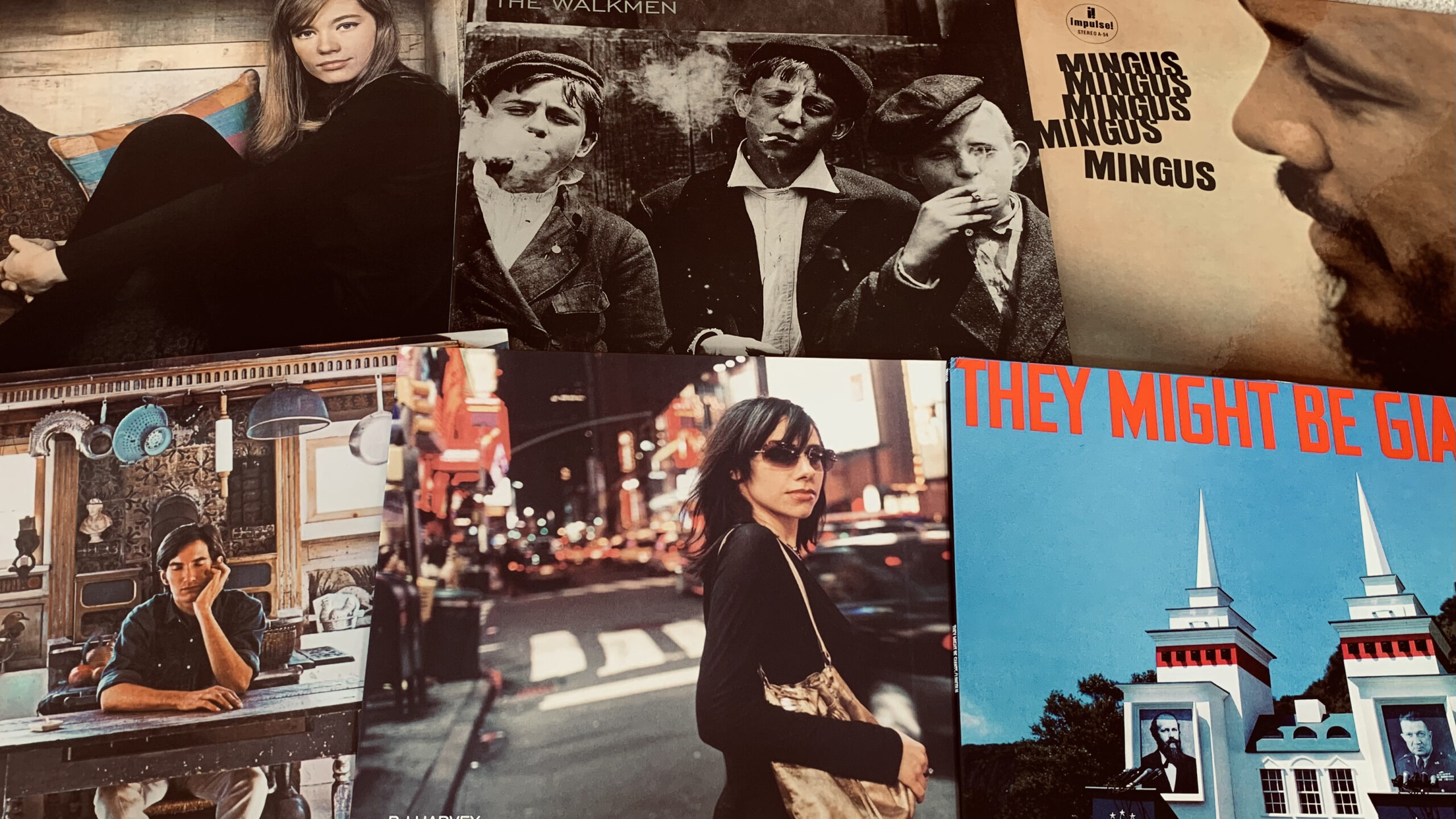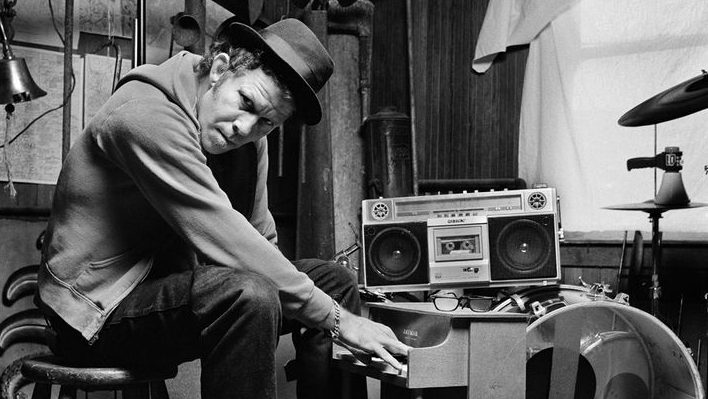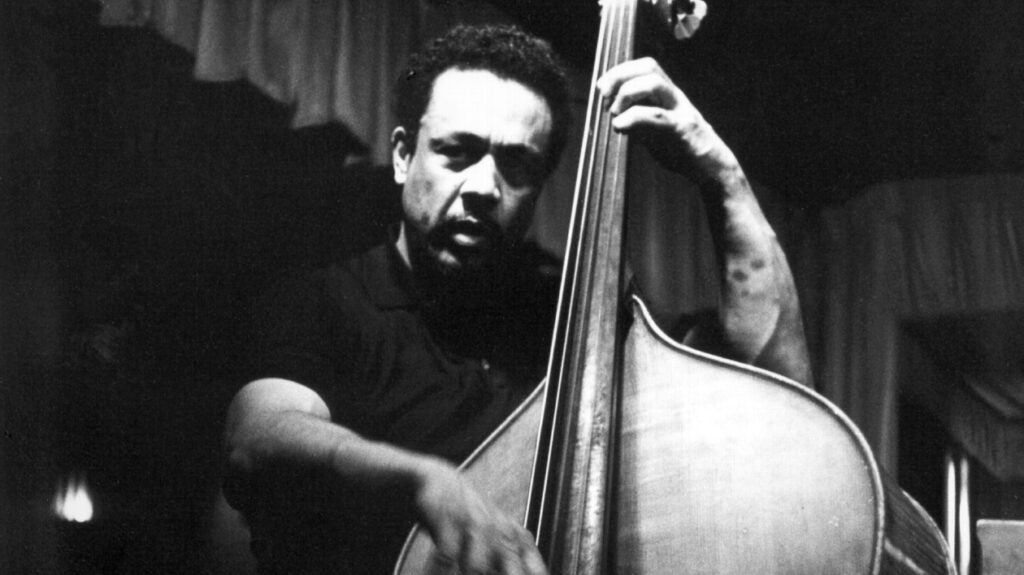
Music nerds love ranked lists. Music nerds love thoughtful commentary. Music nerds love carefully curated playlists. Catalog Crawl provides all of these things and more. In these features, Strange Currencies takes an exhaustive look at the discographies of our favorite artists – the ones who reside at the core of our music obsession.
April 22nd marks the 100th anniversary of the birth of Charles Mingus: bassist, bandleader, composer, and one of jazz music’s most legendary figures. Born in Nogales, Arizona as the son of a U.S. Army sergeant, Mingus grew up in the Watts district of Los Angeles. His multi-racial heritage – which included African, Chinese, German, and Native American ancestry – would have a formative influence on his life’s work: a musical catalog that dramatically stretched the boundaries of what jazz could be.
Like most jazz musicians, Mingus first came to prominence as a sideman, working with the likes of Louis Armstrong, Lionel Hampton, Charlie Parker, and eventually his idol, Duke Ellington. It was Ellington who would most inform Mingus’ work as a composer – developing a sound that bridged the gap between jazz and classical music, and crafting ambitious symphonic arrangements that explored all manner of mood, and reflected the often-volatile personality of its creator.
While Mingus began releasing work as a bandleader in the early 1950s, the unique creative voice that would make him a legend truly took shape on 1956’s Pithecanthropus Erectus. A game-changing merger of jazz’s swinging past with its avant-garde future, the album ushered in a golden era for Mingus – one that would stretch into the mid-sixties, and include milestone records such as Mingus Ah Um (1959), Blues & Roots (1960), and the haunting The Black Saint and the Sinner Lady (1963). After an extended studio hiatus, Mingus would return in 1972 with one of his finest albums, the stunning Let My Children Hear Music. This creative second wind would last until Mingus’ death in 1979 at the age of fifty-six.
Throughout his career as a bandleader, Mingus worked with many of the leading lights of jazz. A short roll call of his collaborators includes luminaries such as Yusef Lateef, Jackie McLean, Bill Evans, Booker Ervin, Eric Dolphy, Max Roach, Roland Kirk, and his right-hand man, drummer Dannie Richmond, who joined Mingus’ band in 1956, and remained in it until Mingus’ death. Richmond’s role in Mingus’ career was fundamental, and the Mingus/Richmond partnership formed one of jazz music’s great creative duos, alongside those of Duke Ellington/Billy Strayhorn, Frank Sinatra/Nelson Riddle, and Miles Davis/Teo Macero.
Defining any jazz catalog can be a tricky task, and Charles Mingus’ is no exception. Like many greats of the genre’s golden age, his best work was often captured in front of a live audience. Albums such as Mingus at the Bohemia (recorded in 1955), Mingus at Antibes (rec. 1960), The Great Concert of Charles Mingus (rec. 1964), and even recently-unearthed gems such as Cornell 1964 provide elemental evidence of his genius; not to mention, some of these include what may be his single greatest composition: the never-recorded-in-the-studio “Meditations on Integration” (aka “Meditations for a Pair of Wire Cutters”). Still, for the purposes of this feature, I have chosen to focus solely on Mingus’ studio recordings, excluding his appearances as a sideman (thus, no Money Jungle, which features some of his most electrifying bass playing), posthumous releases, and those in which he only appeared as a composer and/or musical supervisor.
What this left was a catalog of twenty-five albums: records that revolutionized the genre, inspired countless debates over the definition of jazz, and that showcase a superlative talent for which the word “singular” doesn’t even begin to scratch the surface. Charles Mingus was a visionary. A true original. If this is your first serious encounter with his music, you’re in for some kind of a treat. For (almost) every album here, I am also picking a song for inclusion on an introductory playlist that can be found at the end of the article. Enjoy!
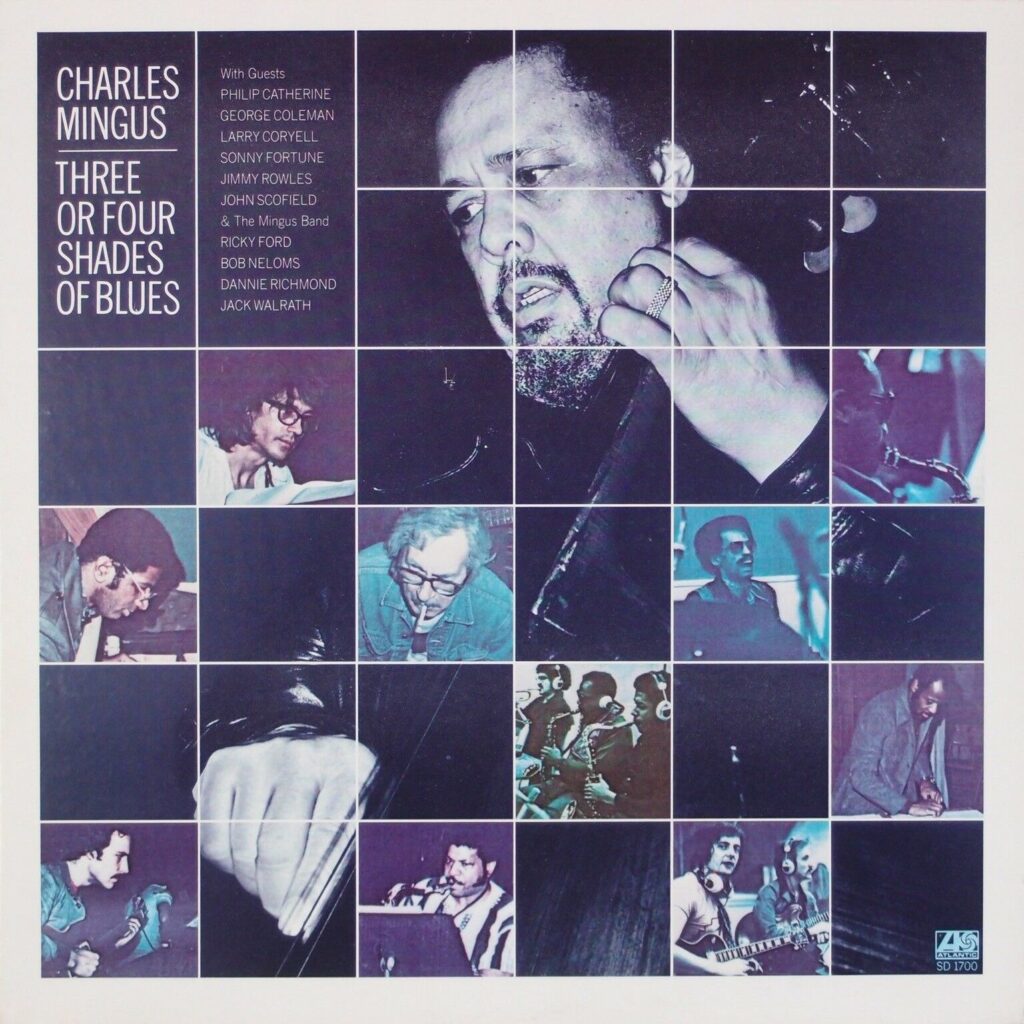
Three or Four Shades of Blues
1977
(6.4)
25
The penultimate release on this list – and the last one to be recorded – Three or Four Shades of Blues is easily the least-impressive of the qualifying albums. There’s nothing on here that’s irredeemable, but the record almost completely lacks the intrigue, vitality, character, and vibe that even the next few entries on the list provide glimpses into, and that the rest of them possess in spades. The most mood-killing element is easily the guitar work. Nothing against the instrument – 1) I’m a guitarist, 2) plenty of jazz guitar is fantastic, and 3) it features prominently on the album at the other end of this list – but its use here seems completely out of character with Mingus’ aesthetic. I’m not saying to avoid this one at all costs, but really, if you were to begin here, you’d certainly be wondering what all the fuss is about.
One for the playlist: I know that the title track has plenty of defenders, and there’s some impressive stuff going on in it, but the guitar there still doesn’t do much for me (and makes me wish that I were listening to John McLaughlin-era Miles Davis instead). Rather, I’m gonna use this pick to address a future tough call on the list, and go with this album’s version of the Mingus classic, “Goodbye Pork Pie Hat.” It’s still not great, but for Mingus newcomers, know that there are much better versions of this beautiful composition to be found on other albums (particularly the original take from 1959’s Mingus Ah Um).
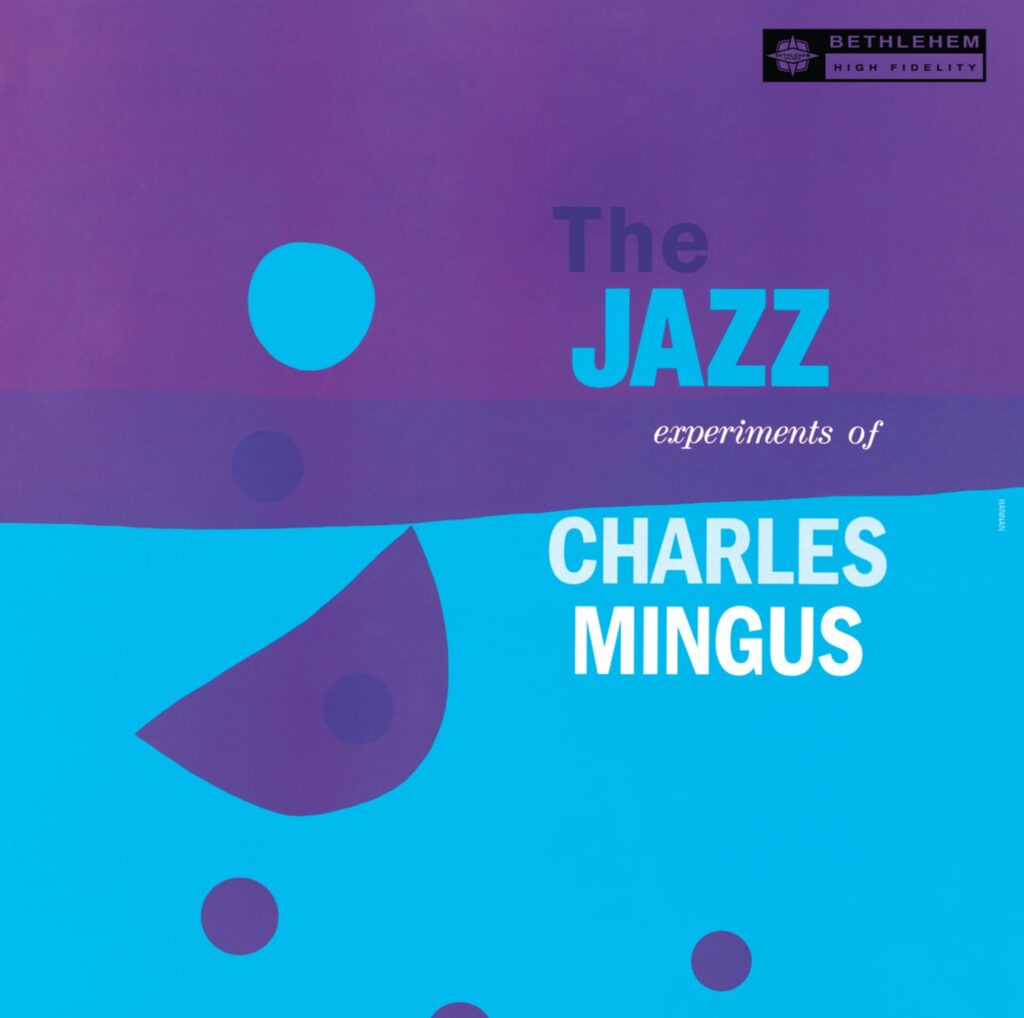
The Jazz Experiments of Charlie Mingus (aka Jazzical Moods)
1957
(7.0)
24
Recorded in late 1954, and originally released as a pair of 10″ discs in 1955 (under the titles Jazzical Moods, Vol. 1-2), The Jazz Experiments of Charlie Mingus isn’t quite as experimental as one might expect – especially given that Mingus’ game-changing Pithecanthropus Erectus would be released the following year – but it’s another satisfying early peek into his unique vision. Though a co-billing credit was initially given to alto saxophonist John LaPorta, arguably the most impressive instrumental work here is that of trumpeter Thad Jones (credited on the original release as Oliver King). The cello of Jackson Wiley also provides a nice complement to several tracks.
One for the playlist: It’s all of a pretty consistent mood, but Vol. 1‘s “Abstractions” – curiously absent from the 1957 re-release – provides a glimmer into Mingus’ compositional style, and does so in a comparatively compact manner.
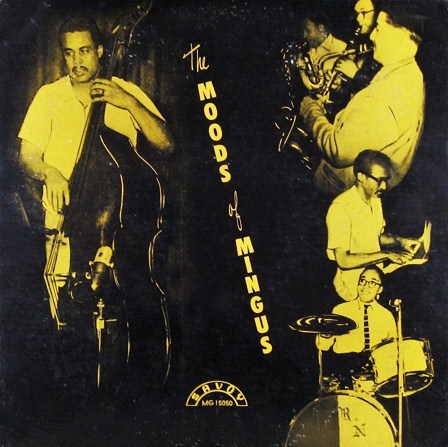
The Moods of Mingus
1954
(7.2)
23
It’s somewhat fitting that the earliest release on this list is titled The Moods of Mingus, given its creator’s notoriously temperamental personality; after all, while it perhaps unfairly typecasted him, Mingus didn’t earn the nickname “The Angry Man of Jazz” for no reason. With that said, Mingus’ earliest full-length as a bandleader – recorded in late 1954 – is one of the more even-keeled entries in his catalog. Mingus’ own voice comes through on the original material – which accounts for four of the collection’s six tracks – and shades of his later work can be heard throughout. Still, given where he would eventually go, The Moods of Mingus seems pretty tame in comparison.
One for the playlist: If it’s not the highlight of The Moods of Mingus, the ominous, off-kilter vibe of “Gregarian Chant” at least provides the best glimpse of what was to come in later Mingus releases. In time, he would find sidemen that were more sympathetic to his vision, but this piece does the trick – at least for now.
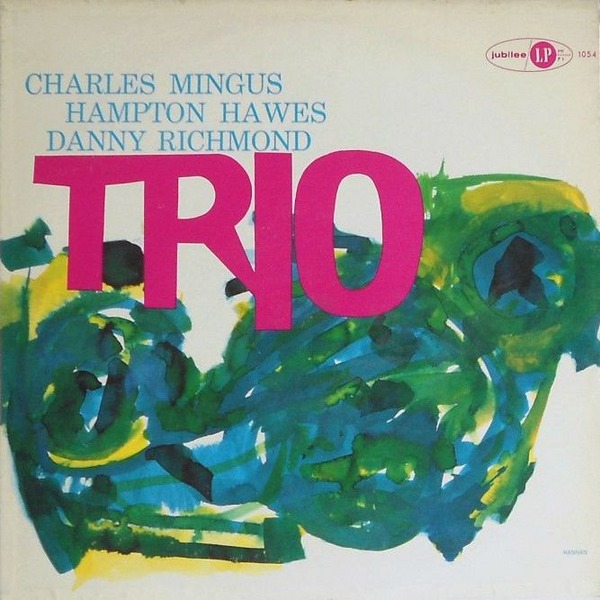
Mingus Three
1957
(7.4)
22
Trio recordings were a rarity for Charles Mingus, outside of 1963’s Money Jungle: a landmark collaboration with Duke Ellington and Max Roach. That makes this 1957 set with Hampton Hawes (piano) and Danny Richmond (drums) a welcome entry in his discography, as it’s a rare instance in which Mingus’ incomparable bass playing was captured in such an intimate setting. Mingus Three may be a little too even-keeled for listeners pulled in by his wilder works, but the sparseness of the arrangements make for a welcome addition to the catalog.
One for the playlist: Mingus composed two of the album’s seven tracks, but neither stand among his ‘A’ material from this era. Hawes’ “Hamp’s New Blues” outclasses either of Mingus’ pieces, but better still is the group’s take on George Gershwin’s Porgy and Bess classic, “Summertime.“
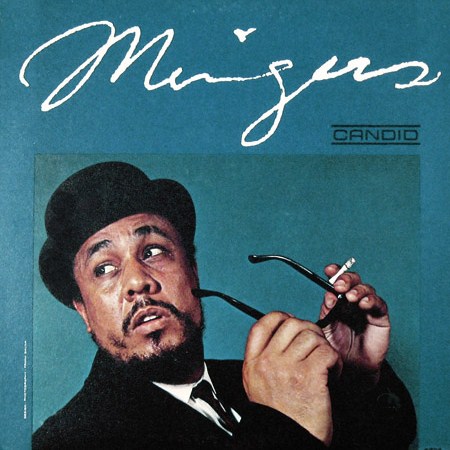
Mingus
1961
(7.7)
21
Somewhat lost in the shuffle of a run of great albums, 1961’s Mingus is one of the most unassuming releases in Charles Mingus’ catalog. At just three tracks – none of which stand among his most revered work – Mingus may seem slight compared to the records that surround it, but it’s a well-balanced, throughly enjoyable listen: one that features a strong showing from one of Mingus’ most noteworthy sidemen, Eric Dolphy.
One for the playlist: At some point in the late-fifties, Mingus reportedly checked himself into the Bellevue psychiatric hospital, undergoing weeks of observation. It was there that he conceived “Lock ‘Em Up (Hellview of Bellvue)” – one of the most intense pieces in his catalog. Fiery and cacophonous, the track offers a stirring aural approximation of both the anger and mental illness that loom large in his biography.
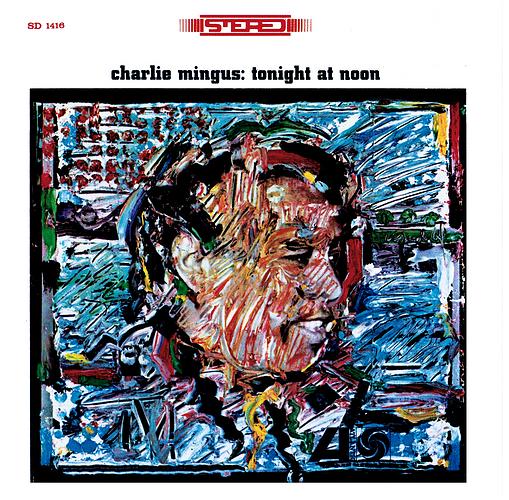
Tonight at Noon
1964
(7.8)
20
A grab bag of sorts, Tonight at Noon was forged from two sessions separated by four years: the dates that led to 1957’s The Clown and 1962’s Oh Yeah. As a result – aside from Dannie Richmond and Jimmy Knepper (trombone) – the personnel varies from track-to-track. Nevertheless, Tonight at Noon maintains a reasonable amount of cohesion, despite the significant differences in the two albums that its sessions had originally produced. It’s something of a minor entry in Mingus’ catalog, but capturing him operating near the height of his powers, it’s a fully worthwhile release.
One for the playlist: Kicking the album off on its strongest note, “Tonight at Noon” is a characteristically manic piece that was left off of The Clown. Holding court on the bass – Mingus actually plays piano on three of this LP’s tracks – he seems at home, and sets a rousing pace on this underrated track.
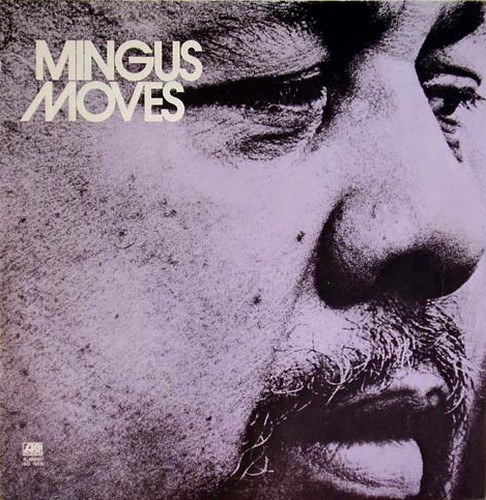
Mingus Moves
1974
(7.8)
19
An overlooked follow-up to 1972’s remarkable Let My Children Hear Music, Mingus Moves confirms that the great bassist’s creative second wind was no mere flash in the pan. While it’s unlikely to be confused with one of his truly major works, it’s deserving of a deeper look from those who have already hit the higher points of Mingus’ catalog.
One for the playlist: I’d argue that the highlights of Mingus Moves are the pair of “Opus” pieces that repurpose the iconic bass line from “Pithecanthropus Erectus.” However, I have a feeling that the meditative opener “Canon” will find a good spot on the playlist amidst all of the wilder material.
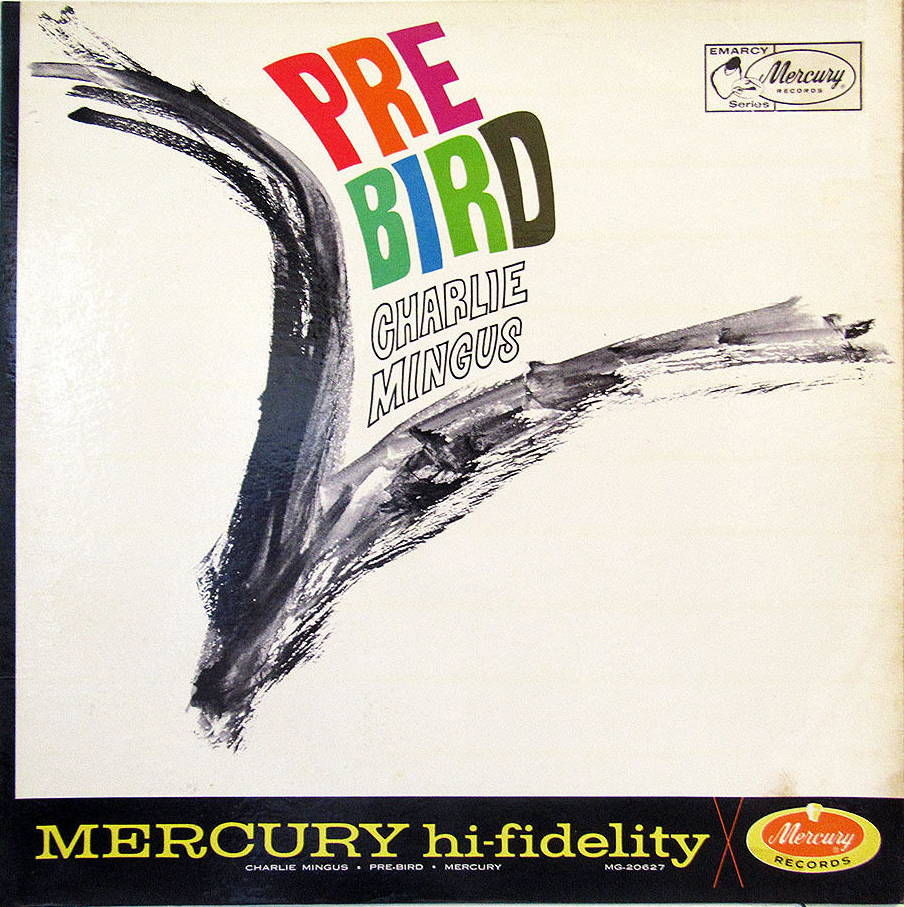
Pre-Bird
1961
(7.9)
18
Though it has one of the more clearly-defined concepts of any of his records – music from before the arrival of Charlie Parker – 1961’s Pre-Bird is one of the more scatterbrained releases in Charles Mingus’ catalog. Everything here is worthy (including the oft-maligned vocal track, “Weird Nightmare”), but as a whole, the album doesn’t exactly coalesce into a cohesive listening experience. Contrapuntal interpretations of Ellington material somewhat awkwardly rub shoulders with formative Mingus compositions, dissonant vocal workouts, and classical-inspired pieces. With that said, Pre-Bird is a favorite among many Mingus fans, and I hope to crack its code someday. For now, it stands as an enjoyable (if somewhat slight) diversion in the middle of a run of classics.
One for the playlist: Mingus was still a couple of years away from his most breathtaking merger of jazz and classical influences when Pre-Bird was released in 1961. However, one can get an early glimpse of his knack for complex orchestration on the closing “Half-Mast Inhibition” – one of his most ambitious pieces.
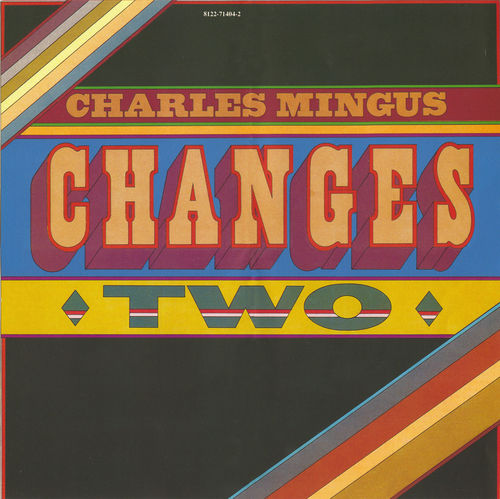
Changes Two
1975
(7.9)
17
Recorded during the same three-day session – and released on the same day in October 1975 – Changes Two is of a pair with the next album on this list. Though it lacks some of the tension and exploratory nature of Mingus’ greatest work, both discs of the Changes project feature stellar playing by all involved; Mingus and Dannie Richmond are joined by Don Pullen (piano), George Adams (tenor sax), and Jack Walrath (trumpet).
One for the playlist: While “Orange Was the Color of Her Dress, Then Silk Blue” is arguably the highlight here, opening track “Free Cell Block F, ‘Tis Nazi U.S.A.” is not just another classic Mingus title, but also a superb demonstration of the chemistry between the quintet assembled for the Changes albums. George Adams’ extended tenor solo is particularly noteworthy.
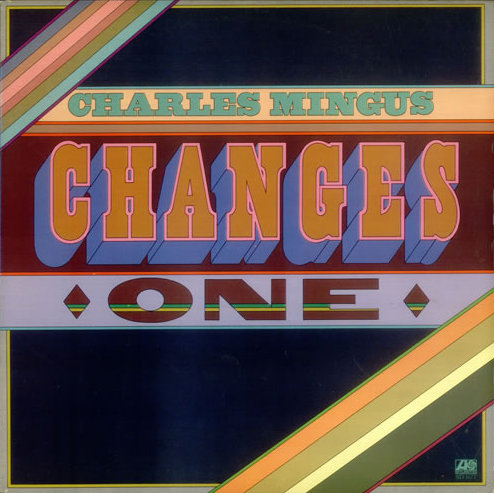
Changes One
1975
(8.1)
16
The better of the two Changes albums by a slight margin, Changes One is another impressive display from a group that had settled into a satisfying equilibrium, but which could still dazzle when necessary. Mingus’ late-career work often tends to get overlooked, but the excellent one-two punch of Changes prove that his creative fire remained lit.
One for the playlist: As much as I don’t want to pick the longest track on every album – this is gonna be a lengthy playlist – it’s hard to deny that the shape-shifting centerpiece “Sue’s Changes” is the best thing on this record. Morphing seamlessly through several different movements, it’s a sprawling epic that harkens back to some of Mingus’ greatest work.
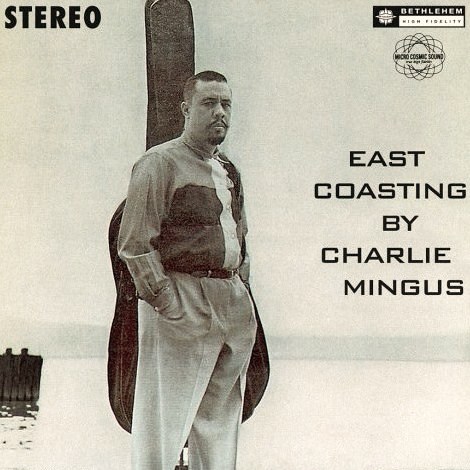
East Coasting
1957
(8.2)
15
Though it’s one of his more traditional releases, the comparatively simple charms of 1957’s East Coasting hold a special place in the hearts of many devoted Charles Mingus fans. The presence of Bill Evans on piano certainly doesn’t hurt, and neither does the growing chemistry between Mingus and his musical soulmate, drummer Dannie Richmond.
One for the playlist: Mingus composed five of East Coasting‘s six tracks. The best of these is “West Coast Ghost,” which contains just enough of a hint of the iconoclast spirit that would eventually make him such a revered figure.
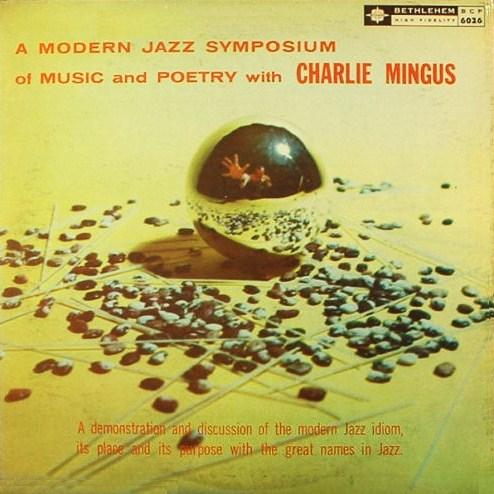
A Modern Jazz Symposium of Music and Poetry
1958
(8.3)
14
Recorded in 1957 and held from release for over a year, A Modern Jazz Symposium of Music and Poetry is an oft-overlooked album from Mingus’ peak era. Perhaps much of this has to do with the fact that most of its material would eventually find homes on better-regarded records: “Duke’s Choice” was re-recorded as “I X Love” for Mingus Mingus Mingus Mingus Mingus; parts of three tracks would be reworked for Mingus Ah Um‘s “Open Letter to Duke”; and even the epic opener, “Scenes in the City,” would eventually be appended to reissues of Tijuana Moods. This is a formative recording – and a highly rewarding one at that – which helped to pave the way for even better work ahead.
One for the playlist: Dominating over the rest of the album, “Scenes in the City” opens A Modern Jazz Symposium by delivering both the music and poetry promised in its title. In addition to a compelling, scene-shifting musical landscape, the lengthy track features Mel Stewart reciting a piece written by Lonne Elder and Langston Hughes. Spoken word tracks have a way of dividing jazz fans – and Mingus’ are no exception – but this is an example of it being done well.
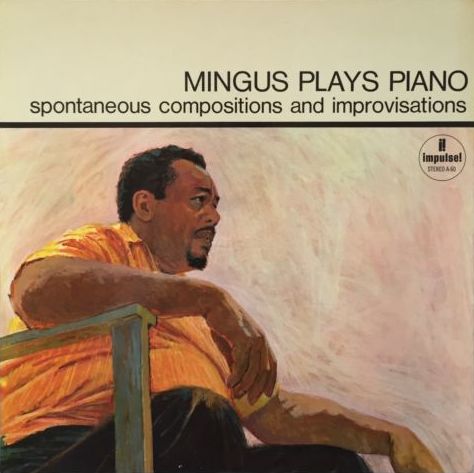
Mingus Plays Piano: Spontaneous Compositions and Improvisations
1964
(8.3)
13
1964’s Mingus Plays Piano is a singular entry in his discography, and it would be Mingus’ last proper studio release for nearly eight years. While few would cite him as a virtuoso on the piano, Mingus was a skilled, nuanced player; in fact, he had even studied under the legendary Art Tatum while serving as the bassist in Tatum’s group. The true value of Plays Piano arguably lies in the bare-bones insight that it gives into Mingus’ compositional approach. Even the interpretations of well-known standards – such as “Body and Soul” and “I’m Getting Sentimental Over You” – bear his unique stamp, shedding additional light on his genius.
One for the playlist: In 1927, Bix Beiderbecke cut a solo piano recording of his original composition, “In a Mist.” While Beiderbecke was among the most celebrated instrumental virtuosos of his time – his cornet work was often compared to that of Louis Armstrong – this sparse track, on which he didn’t even play his primary instrument, would in time become his most beloved recording. There is a small subset of Charles Mingus fans who feel similarly about this album’s opening track, “Myself When I Am Real.” Based on title alone, it’s one of his most beautiful pieces, but the largely-spontaneous composition also provides a fascinating glimpse into the creative process of one of jazz music’s truly titanic figures.
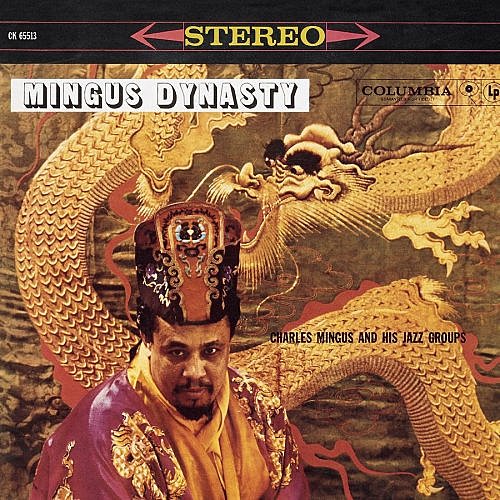
Mingus Dynasty
1960
(8.6)
12
Certainly one of the most consistent releases in Mingus’ discography, 1960’s Mingus Dynasty never quite rises to the heights of surrounding albums, but every track is a worthwhile and distinctive addition to his cumulative body of work. Still riding on the songwriting high that had produced Mingus Ah Um and Blues & Roots, Dynasty is another showcase for his compositional talents, which are augmented by solid takes on a pair of Ellington standards.
One for the playlist: Album centerpiece “Far Wells, Mill Valley” is the most impressive track here. It takes full advantage of the expanded cast of musicians, creating an atmosphere that could best be described as “cinematic.” It also incorporates some of the Far Eastern influences hinted at on the album’s cover: itself a nod to Mingus’ maternal lineage.
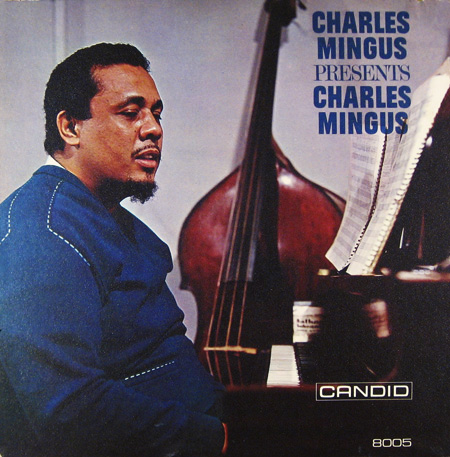
Presents Charles Mingus
1961
(8.6)
11
The first Charles Mingus album that I ever heard – a remnant of the glory days of eMusic, when $20 would get you 90 downloads a month, and any song, regardless of length, cost only a single download credit – Presents Charles Mingus now seems like a curious introduction to his catalog. Presents is a mock live album, released by the small independent label, Candid, largely as a way to put out a song that the suits at Columbia thought was too controversial. It’s a rough sounding record, lacking the polish of his then-recent albums, Mingus Ah Um and Mingus Dynasty. Plus, its slight, four-song track list contains some of Mingus’ most freewheeling work. Despite all of these factors seemingly working against it, Presents set a strong hook for someone who was still a relative newcomer to jazz music.
One for the playlist: The aforementioned controversial track, “Original Faubus Fables” may lack the professionalism of the Ah Um take, but hearing Mingus and Dannie Richmond deliver a lyrical takedown of the “first, or second or third, all-American heel,” Orville Faubus, remains a treat. Plus, the brilliant Eric Dolphy appears on this version.
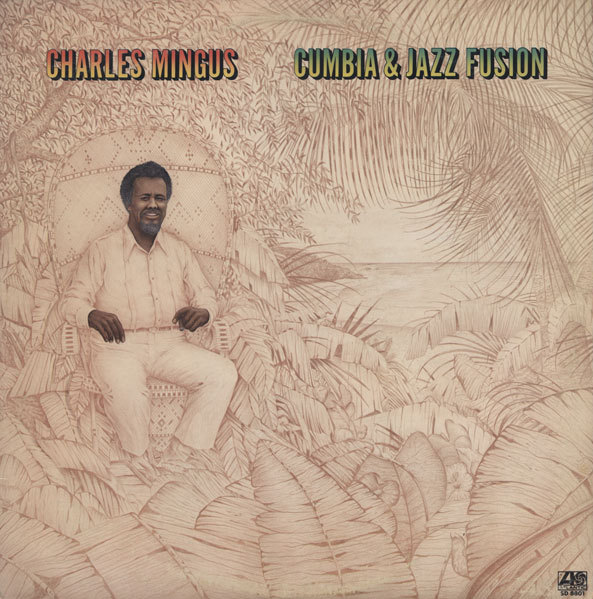
Cumbia & Jazz Fusion
1978
(8.7)
10
The last album released during his lifetime, Cumbia & Jazz Fusion proved that, even in his final years, Charles Mingus held on to the tireless creative spirit that defined his greatest artistic achievements. Comprised of two epic-length tracks – both of which were composed for the film Todo Modo – the album reflected the cross-genre fusion hinted at in its name, particularly in its A-side title track, whose rich bed of percussion provides an evocative backdrop. That track also features a brief vocal section, in which Mingus shows that the fiery political themes of his peak era had not faded in their intensity; he mocks the use of Black caricatures as product mascots, and counters the segregationist sentiment that was still raging, over two decades after Brown v. Board of Education. It may have arrived at the end of his career, but Cumbia & Jazz Fusion should be considered as one of Mingus’ major works.
One for the playlist: This is one of the two albums that I’m refraining from representing on the playlist. First off, the “short” song here is twenty-two minutes long, and second, this is one of those albums that creates its own unique headspace – one that doesn’t exactly transfer to a playlist format. Finally, this is by far the least-known album in the top ten – it has less than 700 ratings on RateYourMusic, whereas the second-least-rated has nearly 2500, and the most-rated has nearly 22,000 – so give the entire thing a much-deserved listen.
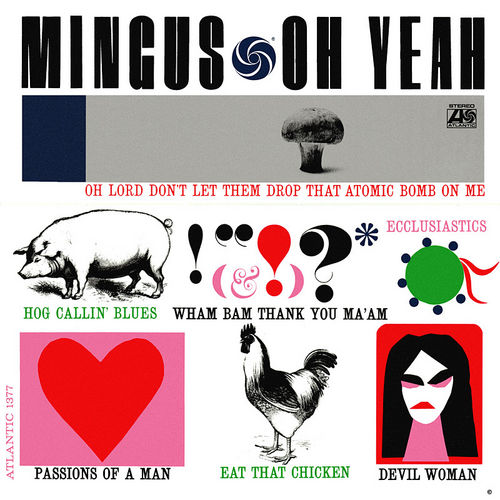
Oh Yeah
1962
(8.7)
9
Easily one of the wildest releases in Mingus’ catalog, 1962’s Oh Yeah is more than a bit of a mindfuck. For starters, Mingus himself cedes the bass playing to stand-in, Doug Watkins. This frees him up to perform these seven original compositions on the piano, and to focus on the album’s surprisingly-heavy emphasis on vocals. Add in the singular talents and unique vision of multi-instrumentalist Roland Kirk, and you have a record that pushes heavily against the boundaries that Mingus had already obliterated with his earlier work.
One for the playlist: There’s a part of me that wants to pick the closing “Passions of a Man” for its sheer “WTF?” capacity. However, the opening “Hog Callin’ Blues” is another one of those Mingus standards – instantly recognizable as his work, the second the needle drops.
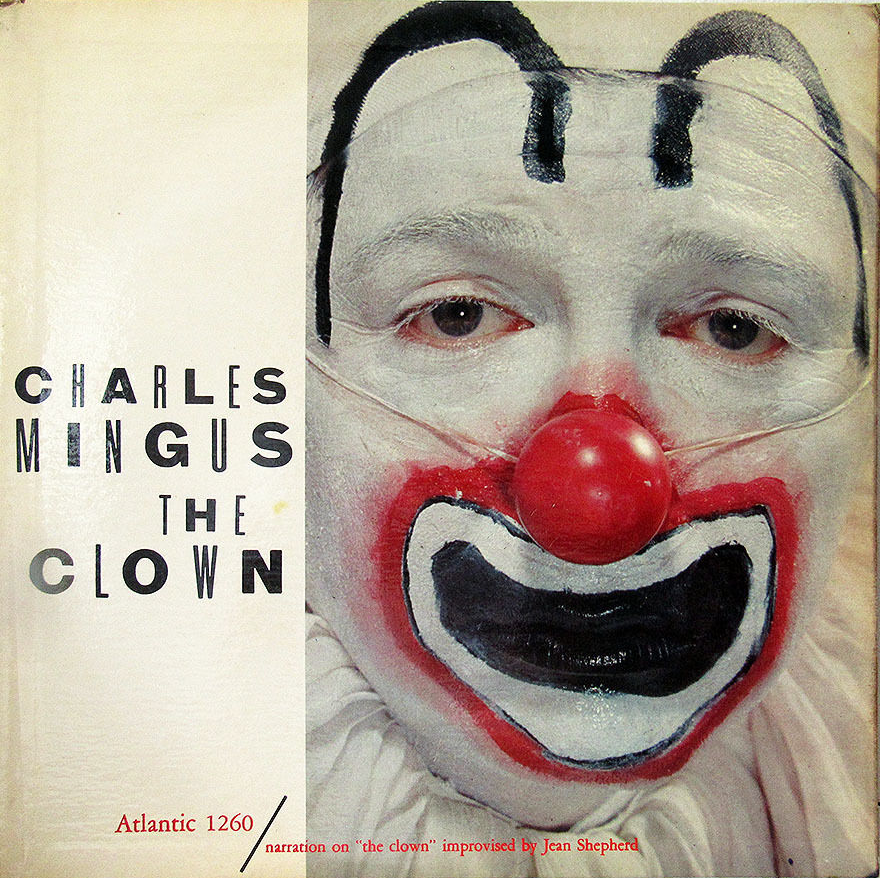
The Clown
1957
(9.0)
8
The follow-up to 1956’s creative breakthrough, Pithecanthropus Erectus, The Clown further cemented the singular vision that would propel Charles Mingus through a decade of dizzying artistic heights. Like Pithecanthropus, The Clown opens with one of Mingus’ signature pieces – the sprawling tour-de-force, “Haitian Fight Song” – but this time out, the supporting material is even stronger. At least some of that has to do with the arrival of drummer Dannie Richmond, Mingus’ most indispensable collaborator.
One for the playlist: “Haitian Fight Song” is certainly the highlight, but for reasons that’ll be explained in time, I’m not going to pick it as the representative. The middle two tracks are both excellent, but what you really want from Mingus is something distinctive. That leaves “The Clown”: a track whose circus-inspired instrumentation and Jean Shepherd narration makes it one of the most divisive pieces in Mingus’ catalog.
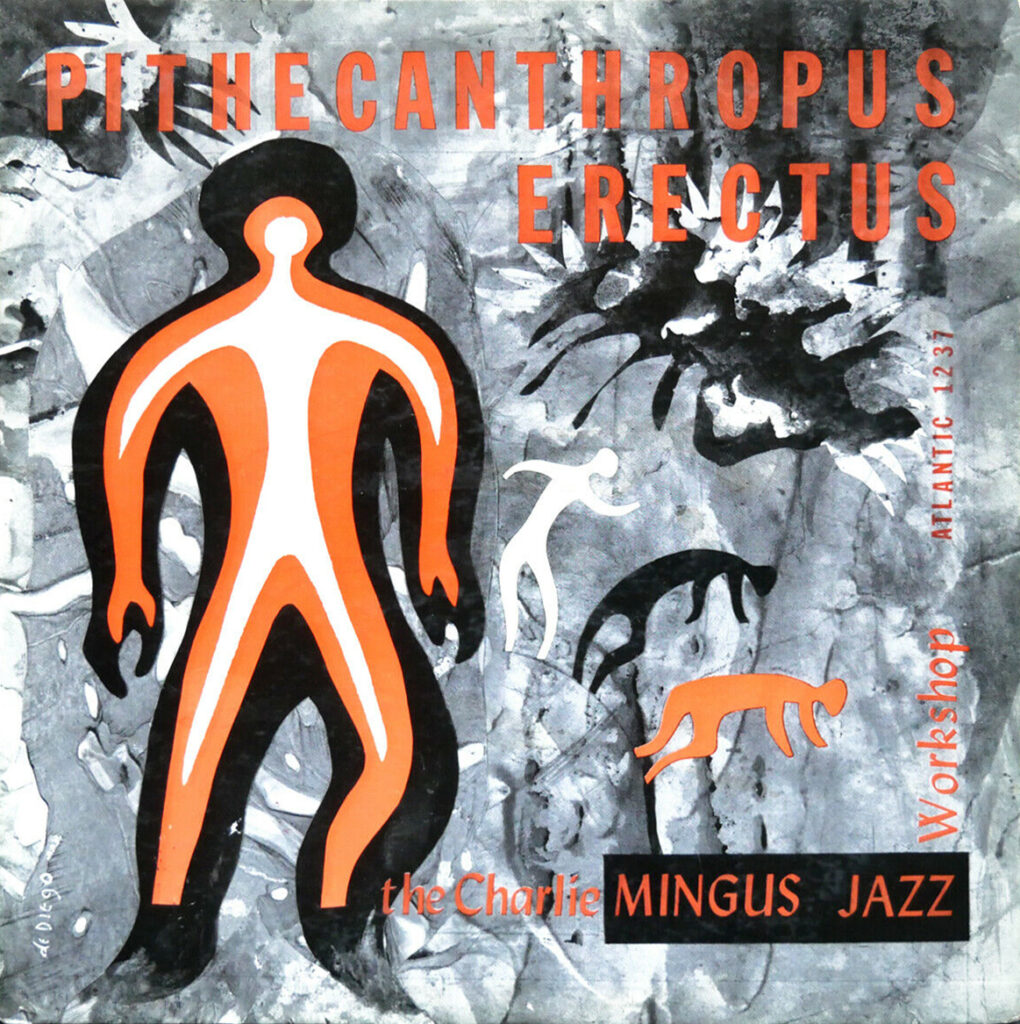
Pithecanthropus Erectus
1956
(9.2)
7
What a difference a year makes. To listen to Charles Mingus’ 1955 pair of 10″ LPs, Jazzical Moods, is to hear a thoroughly pleasant take on contemporary post-bop stylings. There’s little in the way of friction in the collected pieces, just a talented group of players showing off their individual prowess and chemistry as an ensemble. Within the first few bars of Mingus’ next project as a bandleader, 1956’s Pithecanthropus Erectus, the listener must certainly become aware that they are entering something best described as an “experience.”
Few albums in any genre are as dominated by a single track as Pithecanthropus Erectus. The three other pieces are all worthwhile – I’ve always had a fondness for the brief Jackie McLean feature, “Profile of Jackie” – but while a little more adventurous than his previous fare, none stand too far apart from the work that Mingus had already tucked under his belt. This album truly belongs to its title track: a sinister, lurching excursion into the dark side of jazz that stood years ahead of its time.
One for the playlist: This one is just too easy. As I said, “Pithecanthropus Erectus” is the clear showcase piece here, and one of the most influential tracks in the history of jazz to boot. Picking anything else would just be absurd.
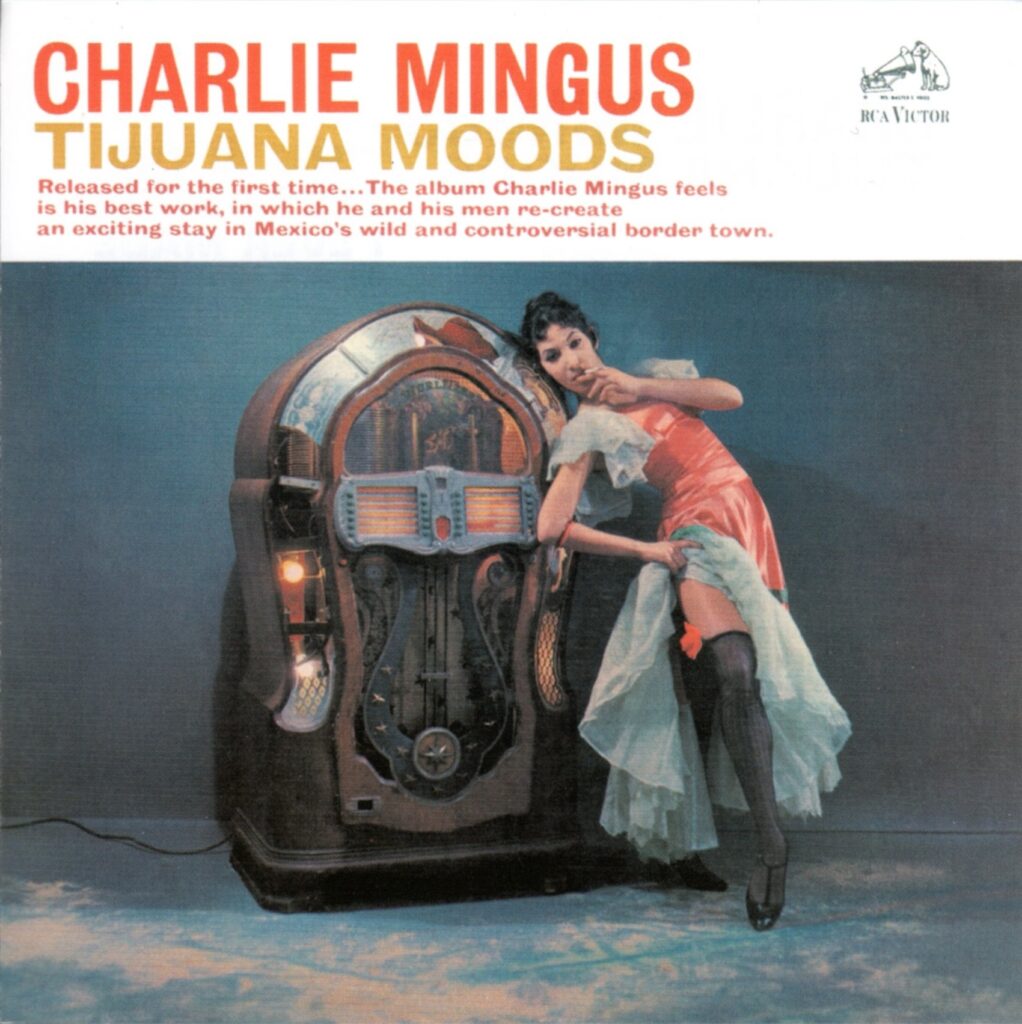
Tijuana Moods
1962
(9.3)
6
Upon its 1962 release, Charles Mingus cited Tijuana Moods as “the best record I ever made.” It was certainly one of the most unique. Written and recorded shortly after after a debaucherous 1957 trip, in which Mingus – “minus a wife,” and with Dannie Richmond in tow – found inspiration in the streets, gift shops, and strip clubs of the famed Mexican border town, Tijuana Moods echoed the “exotic” pre-war compositions of his idol, Duke Ellington, while seemingly predicting similarly-inspired albums by Miles Davis (Sketches of Spain) and John Coltrane (Olé Coltrane). Despite the nearly five-year span between its recording and eventual release, Tijuana Moods easily stands among Mingus’ most memorable and expressive works.
One for the playlist: The pulse of Tijuana is felt most palpably in the stirring “Ysabel’s Table Dance.” The track’s castanet-augmented rhythm is infectious – so much in fact, that Mingus would return to it six years later as a recurring motif in his greatest masterpiece.
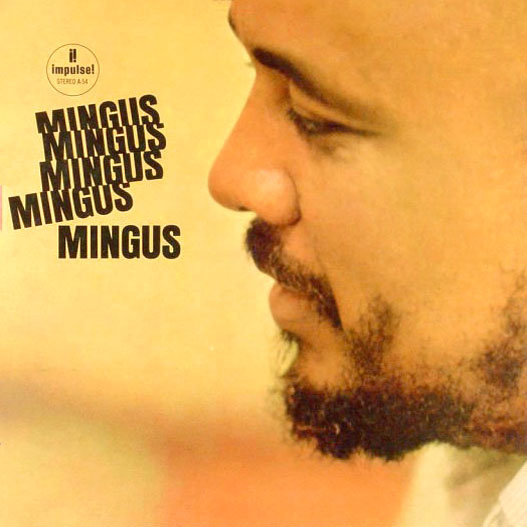
Mingus Mingus Mingus Mingus Mingus
1964
(9.5)
5
It wouldn’t seem that an album based on revisitations of previously-released material would scream essential, but the absurdly-titled Mingus Mingus Mingus Mingus Mingus stands as one of the most vital works in the great bassist’s discography. Yes, if you knew Mingus in 1964, you’d probably have heard most (if not all) of these tracks elsewhere, but each of the seven recordings presented on this veritable “best of” is given new life by one of Mingus’ greatest bands. In many ways, it represented the end of Mingus’ golden era – with the presence of Eric Dolphy being of particular significance – but it makes for an electrifying victory lap.
One for the playlist: You simply will not find a better five minutes of music than “II B.S.,” the roaring opening track from Mingus… A condensed version of The Clown‘s rousing “Haitian Fight Song,” the track practically presents Mingus as a pop artist, reducing the once-sprawling composition to its core hook, and letting the band behind him build it to a frenzy. It’s a stunning piece – one that virtually leaps from the speakers – and if you know anyone in need of a quick crash course on the merits of post-war American jazz, point them in this direction.
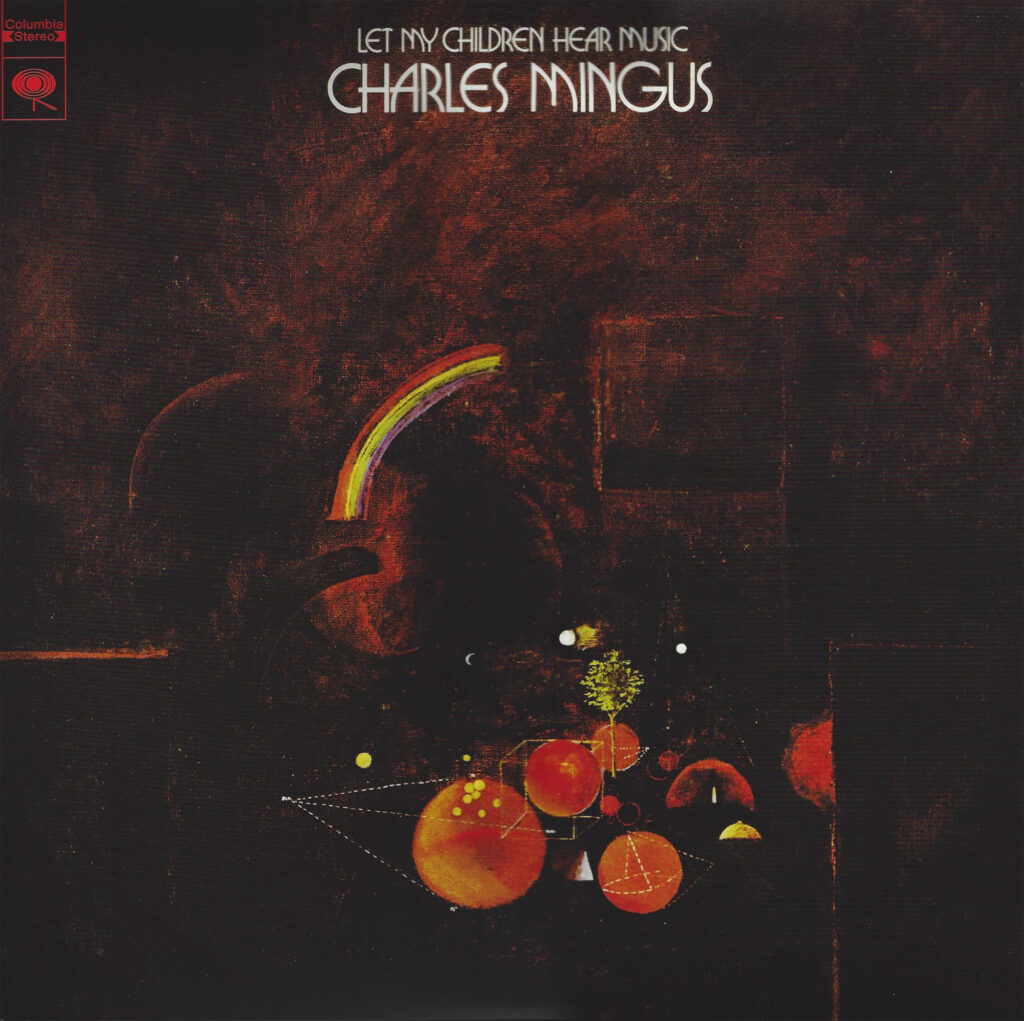
Let My Children Hear Music
1972
(9.6)
4
The late-career masterpiece, Let My Children Hear Music found Charles Mingus returning to the studio after a lengthy hiatus, and turning out one of his finest collections of music. Richly orchestrated, both atmospheric and swinging, and often oppressively bleak, the album occupies a wholly unique space – not only in Mingus’ discography, but in the entire history of jazz. The three remaining records on this list capture Mingus in his true prime, but Let My Children Hear Music is every bit as vital.
One for the playlist: If it were merely for its title alone, opening track “The Shoes of the Fisherman’s Wife Are Some Jive Ass Slippers” would merit consideration. However, it also happens to be one of Mingus’ greatest compositions – a track that manages to condense all of the wild complexity of the following tracks into a single stunning piece.
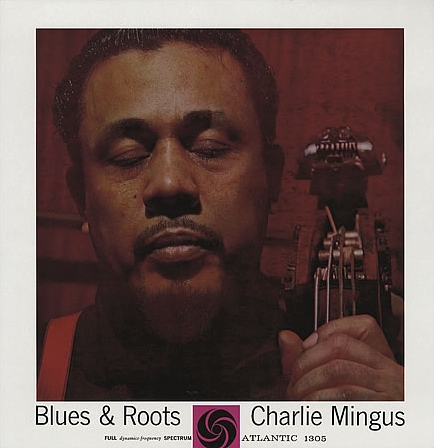
Blues & Roots
1960
(9.7)
3
Released after – but recorded three months before – 1959’s landmark Mingus Ah Um, Blues & Roots features much of the same personnel, and thus, it has often drawn comparisons to its beloved predecessor. Whereas Ah Um carries the sheen of more commercial ambition – it was Mingus’ debut for Columbia – Blues & Roots is arguably a more spirited affair. It’s definitely the fierier session, famously recorded as a response to the critics who suggested that Mingus couldn’t “swing.” Whether Blues & Roots satiated those critics is immaterial, and a question better left to jazz scholars. What does matter is that this record retains the fire that drove its creation, over sixty years after the fact.
One for the playlist: There are zero weak spots on this one, and a pair of certified Mingus classics. While “Wednesday Night Prayer Meeting” is an absolutely stellar scene setter, the pick here has to be the incomparable “Moanin‘.“ Carried by the iconic baritone sax riff of Pepper Adams – one of the few personnel changes from Ah Um – it’s one of the greatest jazz recordings of any era.
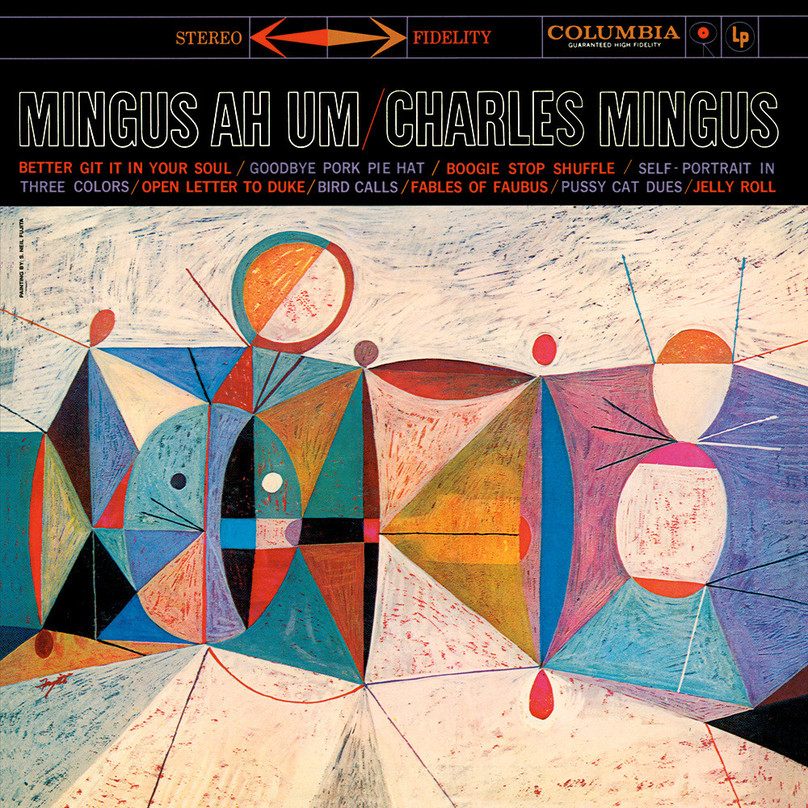
Mingus Ah Um
1959
(10.0)
2
For all but three jazz artists (Mingus, Miles Davis, and John Coltrane), an album on the scale of Mingus Ah Um would easily be a career peak. Plenty still argue that it is his best record, and some (perhaps stodgier) folks may insist that it’s his best jazz album – at least if they are of the mindset that the spectral grace of his true masterpiece is something altogether different from jazz.
The bottom line is that Mingus Ah Um is a phenomenal record. Over the course of nine sprawling tracks, Mingus lets the deep well of jazz history run through his work. He pays tribute to his heroes (“Open Letter to Duke,” “Bird Calls,” “Jelly Roll”), honors departed friends (“Goodbye Pork Pie Hat”), celebrates the ability of music to provide a religious experience (“Better Git It in Your Soul”), and speaks truth to undeserved power (“Fables of Faubus”).
Mingus had crafted brilliant work beforehand – and would reach an even greater peak afterward – but Ah Um is where he truly solidified a claim as not only one of jazz music’s most trailblazing figures, but as one of America’s finest composers. Ever. This is where he became a giant.
One for the playlist: Damn that one-song-per-album rule. While any of the nine tracks from Ah Um are worthy of making the list, it comes down to the record’s glorious one-two opening punch. Though Mingus’ beautiful tribute to Lester Young (“Goodbye Pork Pie Hat”) arguably stands as one of the five finest pieces in his discography, I just can’t deny the life-affirming joy that is “Better Git It in Your Soul” – a most welcoming introduction to a truly brilliant album.
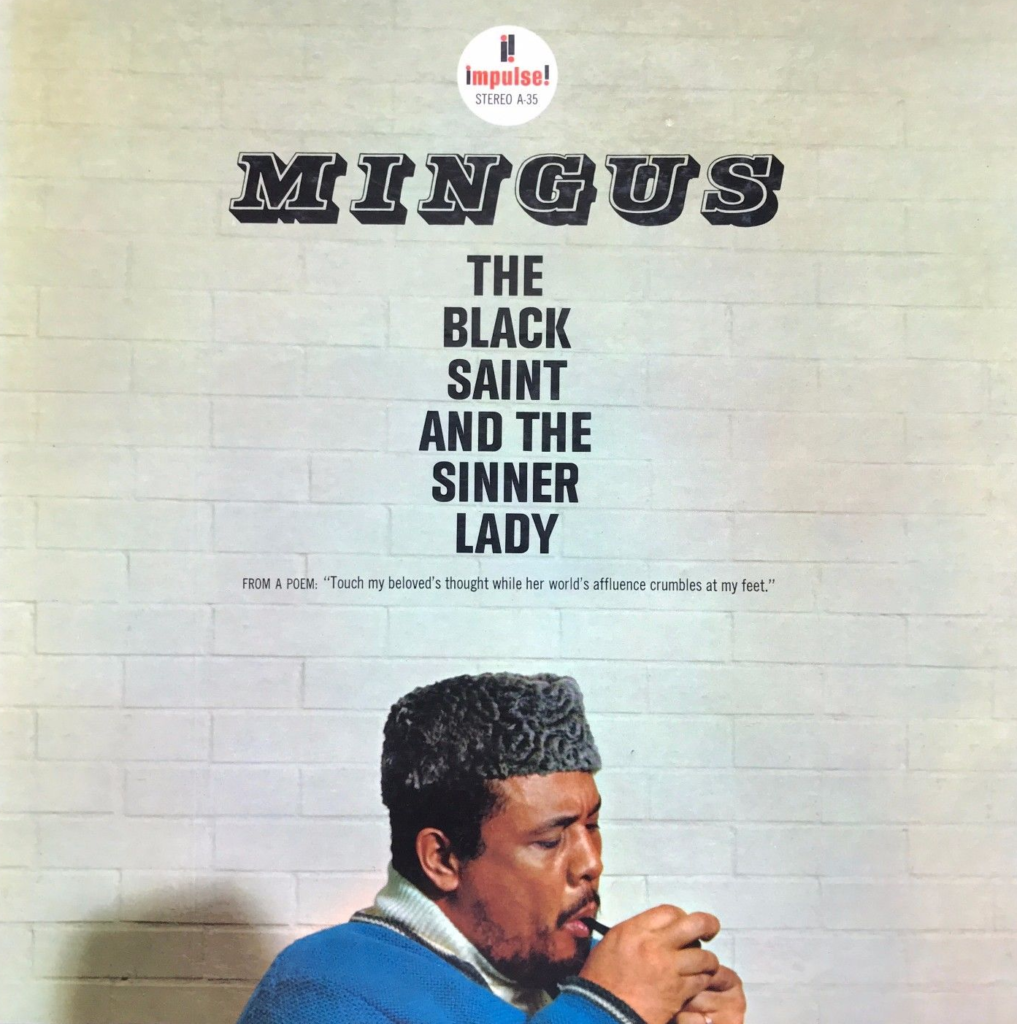
The Black Saint and the Sinner Lady
1963
(10.0)
1
I don’t believe in ghosts. However, I once spent a couple of nights camping out on the floor of an allegedly haunted banquet hall in Jerome, Arizona in the spring of 2009. The band(s) that I was in at the time rented the place for a weekend, planning to spend a day recording, and then putting on a show for locals in the former copper mining community-turned tourist-trap ghost town.
I wanted to feel some kind of a presence. I even tried to convince myself that the venue – which had at one point been the local J.C. Penny Co. building – had once been the IWW hall, where the 1917 strike that led to the little-known “Jerome Deportation” had begun. Alas, at best, the place was vibey. But for most of the weekend, it was simply just a room.
There was a period of roughly thirty-seven minutes on our first night there where I came close to being convinced. After unloading our rental van full of gear, grabbing dinner, returning to set up our equipment, and running through a few songs, the five of us who stayed in the hall – now minus the one who got a room in a nearby hotel – took to decorating the stage with several strands of white Christmas lights. We then turned off the house lights and listened to Charles Mingus’ masterpiece.
In that moment, with that music playing, the hall took on an entirely different atmosphere. Spectral under even the most mundane of conditions, The Black Saint and the Sinner Lady turned that room, and the town that surrounded it, into an entirely different place. The ghosts of long-dead miners, and those of the vigilante cowards who sold out their brethren at the behest of greedy copper bosses, tangled in mid-air. The shadows cast by our five moving figures, generated from hundreds of tiny points of illumination, moved ever more slowly. The cool air of the Northern Arizona night felt a little more crisp than before. Something changed; and in ways that I can’t explain.
Again, I don’t believe in ghosts.
One for the playlist: I can’t do it. If you’ve never heard this album, you must listen to it. All of it.


